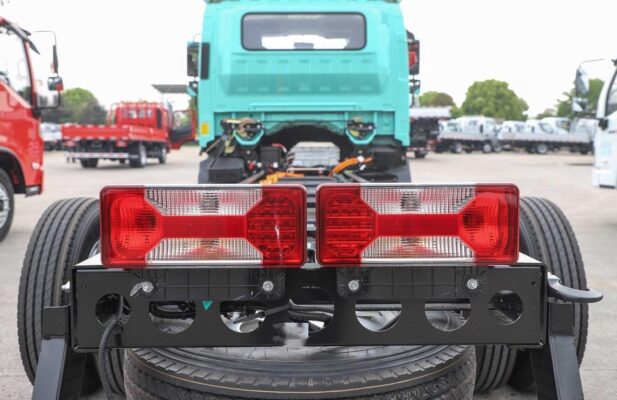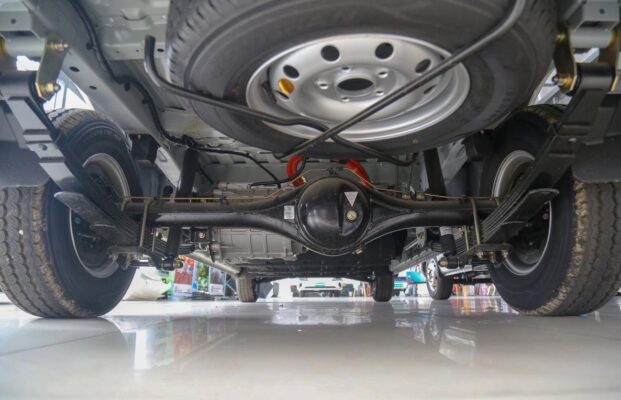Electric Truck News
Four tips to avoid blurry rearview mirrors on rainy days
Posted on by Electric Trucks
Rainy days can pose a significant challenge for drivers, especially when it comes to maintaining clear visibility through the rearview mirror. As raindrops accumulate on the mirror’s surface, it can become increasingly difficult to see the traffic coming from behind, which can have a serious impact on driving safety. In this article, we will explore four useful tips to help you avoid blurry rearview mirrors on rainy days and ensure a safer driving experience.

When driving on rainy days, the rearview mirror can easily become blurry, affecting the driver’s ability to observe the traffic coming from behind. This lack of visibility can be a major source of stress and anxiety for drivers. Many times, because the owner cannot see the road conditions behind clearly, they dare not change lanes. Looking back is very dangerous, so they drive nervously. The uncertainty of not knowing what’s happening behind the vehicle can make driving on rainy days a nerve-wracking experience.

After finally stopping and pulling over to the side of the road to wipe the car, it is immediately covered with raindrops again. This can be extremely frustrating, as it seems like a never-ending battle to keep the rearview mirror clear. Some “bold” drivers even wipe with a towel while driving, which is very dangerous! Not only does this pose a significant distraction, but it also takes the driver’s attention away from the road, increasing the risk of an accident.
So how can we solve the problem of blurry rearview mirrors on rainy days that affect driving safety? Let’s explore four effective tips.

The simplest and most convenient method to address blurry rearview mirrors on rainy days is to install rain visors. Rain visors are designed to fit over the rearview mirror and act as a shield against raindrops. They come in various shapes and sizes, so it’s important to choose some high-quality rain visors that can be installed firmly. A well-installed rain visor can play a certain role in blocking raindrops and is the most effortless solution for many drivers.
However, it’s important to note that installing rain visors does have some drawbacks. One of the main concerns is that they can affect the beauty of the car. Some drivers may find that the rain visors detract from the overall appearance of their vehicle. Be to, if it rains heavily, rain visors may not be entirely effective. In extreme downpours, the volume of rain can overwhelm the rain visors, and the rearview mirror may still become blurry.

Despite these limitations, rain visors can be a useful option for light to moderate rain. They are easy to install and can provide some level of protection for the rearview mirror. For drivers who are looking for a quick and simple solution, rain visors may be worth considering.
For example, imagine a driver on a rainy day who has installed rain visors on their rearview mirror. As they drive through light rain, the rain visors help to keep the mirror relatively clear, allowing them to see the traffic behind them with ease. This gives the driver more confidence and reduces the stress of driving in rainy conditions.

Electrically heated rearview mirrors are another effective solution for dealing with blurry rearview mirrors on rainy days. These mirrors are equipped with a heating element that can warm up the mirror’s surface, helping to eliminate water vapor and mist. Not only do electrically heated rearview mirrors have a certain effect on eliminating water vapor and mist in winter, but on rainy days with light rain, they can also dry the rainwater by their own heat and improve the driver’s field of vision.
The heating element in electrically heated rearview mirrors works by raising the temperature of the mirror’s surface. This helps to evaporate any moisture that has accumulated on the mirror, keeping it clear and free from blurriness. In addition to being effective in rainy conditions, electrically heated rearview mirrors can also be useful in cold weather when frost or ice may form on the mirror.

However, it’s important to note that electrically heated rearview mirrors may not be as effective in heavy rain. In extreme downpours, the volume of rain may be too much for the heating element to handle, and the mirror may still become blurry. Be to, not all vehicles come equipped with electrically heated rearview mirrors, so this may be an upgrade that some drivers need to consider installing.
For instance, a driver with electrically heated rearview mirrors notices a significant improvement in visibility on a rainy day. As the rain falls, the heating element quickly warms up the mirror, drying the raindrops and providing a clear view of the traffic behind. This allows the driver to drive more safely and confidently, knowing that they can see what’s happening around them.

Another creative solution to keep the rearview mirror clear on rainy days is to apply soap. Soap can destroy the surface tension of water. When soap molecules enter the water, the hydrophilic part with polarity will destroy the attraction between water molecules and reduce the surface tension of water. This causes the water molecules to be evenly distributed on the treated glass surface and attached to the glass in the form of a water film.

The more rain that hits the glass, the larger the water film formed, keeping the glass always in good clarity. This method can keep the rearview mirror clear for 2 to 3 hours, making it a practical option for longer drives in rainy conditions.
To apply soap to the rearview mirror, start by cleaning the mirror’s surface with a clean cloth to remove any dirt or debris. Then, dampen a soft cloth with soapy water and gently wipe the mirror. Make sure to cover the entire surface evenly. Once the soap has been applied, let it dry for a few minutes. After it has dried, use a clean, dry cloth to buff the mirror until it is clear and shiny.

It’s important to note that different types of soap may have varying degrees of effectiveness. Some drivers may find that using a mild dish soap or a special automotive glass cleaner works best. Be to, this method may need to be repeated periodically, especially if the rain is heavy or continuous.
For example, a driver who is about to embark on a long drive on a rainy day decides to apply soap to their rearview mirror. As they drive through the rain, they notice that the mirror remains relatively clear, thanks to the soap’s ability to form a water film. This gives the driver peace of mind and allows them to focus on the road ahead.

- Applying water repellent agent
The main component of glass water repellent agent is silicone oil. It achieves the effect of making the rearview mirror surface not get wet by changing the surface tension of water on the glass. After rainwater falls on the glass treated with water repellent agent, small water droplets will form a round water bead. Slight shaking or wind can make the water bead detach from the rearview mirror.
The biggest advantage of water repellent agent is that it has relatively long durability after use. After applying it once, it can generally last for about 1 month. This means that drivers don’t have to worry about constantly reapplying the treatment every time it rains. Once applied, the water repellent agent provides long-lasting protection against rain and helps to keep the rearview mirror clear.

To apply a water repellent agent, start by cleaning the rearview mirror thoroughly with a glass cleaner. Make sure the mirror is completely dry before applying the agent. Then, using a clean cloth or sponge, apply the water repellent agent evenly to the mirror’s surface. Follow the manufacturer’s instructions for the best results.
For instance, a driver who lives in an area with frequent rain decides to apply a water repellent agent to their rearview mirror. After applying the agent, they notice that even during heavy rainstorms, the mirror remains clear and free from blurriness. This gives the driver the confidence to drive safely in all weather conditions.

Visibility is very important when driving on rainy days. With these four tips, when driving on rainy days, you don’t have to be so troubled by the clarity of the rearview mirror. Try spraying with water repellent agent or applying soap to improve driving safety and ensure the clarity of the rearview mirror field of vision to the greatest extent!
Apibendrinant, blurry rearview mirrors on rainy days can be a significant safety hazard for drivers. However, by using one or more of these four tips, you can improve visibility and reduce the risk of accidents. Whether you choose to install rain visors, use electrically heated rearview mirrors, apply soap, or use a water repellent agent, each method has its own advantages and disadvantages. Consider your specific needs and driving conditions to determine which solution is best for you. By taking these steps to keep your rearview mirror clear, you can enjoy a safer and more comfortable driving experience on rainy days.
